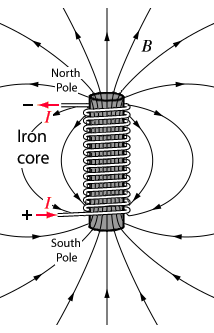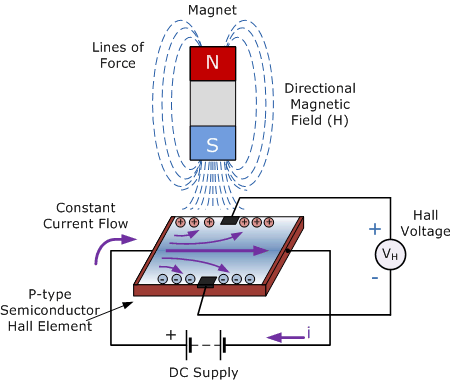Innovative Memory Solutions: Exploring Hall-Effect Core Circuits
Written on
Chapter 1: Understanding Core Memory
Core memory technology, originating in the 1950s, employs ferrite loops—tiny electromagnet cores—to store binary data. Each core can represent a binary digit (1 or 0) based on the direction of the current applied. To store a '1', current is sent in one direction to magnetize the core, while a '0' is achieved by reversing the current flow. This system, while innovative for its time, is notably slow and cumbersome, with the significant drawback that reading the value effectively erases it. When a small current is applied to check the core's state, it overwrites the existing data, necessitating a restoration of the original value immediately after reading.
The remarkable feature of core memory is its non-volatile nature and durability. For instance, after the Challenger Shuttle disaster, flight computer memory remained intact, allowing retrieval of data even after power loss. These cores can theoretically retain data indefinitely if shielded from stray magnetic fields, offering endless read and write cycles without degradation.
Section 1.1: Modern Alternatives: SD Cards
In contrast, contemporary non-volatile storage solutions like SD cards can store vast amounts of data in compact formats. Currently, 128GB SD cards are easily available for around $50, with smaller options priced below $10. The cost is primarily influenced by read/write speeds rather than storage capacity. Although these cards leverage the properties of silicon transistors for near-infinite data retention, they have a notable limitation: each card can only endure a finite number of write/erase cycles before failure.
Section 1.2: Hall-Effect Core Memory: A New Frontier
Inspired by the limitations of existing technologies, I set out to develop a non-volatile memory that could be read and written to without data loss. My initial experiments indicate that this concept, while challenging, is feasible.
Subsection 1.2.1: Storing Binary Data
The core memory concept is straightforward: an iron oxide or ferrite core wrapped with a wire forms a basic electromagnet. By applying current in one direction, the core's magnetic poles are established, and reversing the current alters these poles. The smaller the core, the less current is required to change its magnetic state, which remains intact once the current ceases.

To facilitate experimentation, I opted for a simple iron rod, progressing to more complex designs once a functional prototype emerges. This approach mirrors traditional disk storage methods utilized in computers and older cassette tapes. The challenge lies in effectively reading the stored data.
Subsection 1.2.2: Reading Binary Data with Hall-Effect Sensors
In conventional systems like hard drives or cassette tapes, data is read using a moving electromagnet known as a read head, which generates voltage corresponding to the stored data. Alternatively, a cost-effective and innovative solution involves using Hall-Effect sensors.
The Hall-Effect phenomenon occurs when an electrical current's flow is altered in the presence of a magnetic field, producing a Hall Voltage that indicates the magnetic field's strength and direction, thus representing binary values.

By using a Hall-Effect sensor, we can capture binary data with minimal expense. For roughly $1, we can store a single bit of information, which is particularly useful for maintaining the state of a switch even when power is lost.
Subsection 1.2.3: Building a Functional Circuit
To illustrate this concept, I aim to construct a traffic light circuit that retains its state when power is cut. A switch set to '1' will indicate green, while '0' will show red. Even after turning off the power, the circuit will remember its last state until power is restored.
I'll utilize a floating ground configuration with the Hall-Effect sensor, designating 2.5V as the reference point for controlling the LEDs with transistors. Here’s a preliminary schematic of the circuit created in KiCad, noting that resistor values may need adjustment after the prototype is built.

Chapter 2: Experimenting with Magnetic Structures
To improve upon my initial designs, I experimented with various configurations. My first attempt involved a toroidal shape, similar to traditional core memory, but encountered challenges in sensing magnetic states effectively.
My next prototype utilized a 'C' shape made from mild steel, yielding improved results with a voltage difference of approximately 100mV, which should work well with an operational amplifier.

While this design showed promise, I sought further enhancements by combining different iron oxides and materials, ultimately achieving a voltage difference of around 500mV with a more complex setup.

Despite these advancements, I fell short of my goal to achieve distinct voltage levels that would allow direct LED control without additional amplification. This indicates that while my objectives might be ambitious, they remain within reach.
Future Directions and Ideas
Moving forward, I plan to refine my approach to memory development. This could involve experimenting with various materials to enhance magnetic properties and considering alternative technologies such as Ferroelectric RAM, which may provide a more straightforward solution for non-volatile storage.
Additionally, I am exploring applications of my findings in low-power computing and neuromorphic systems, focusing on creating energy-efficient devices that operate intermittently and reliably.
My ongoing research into memristors may also present innovative ways to store and process data, indicating a promising future for magnetic data storage solutions.